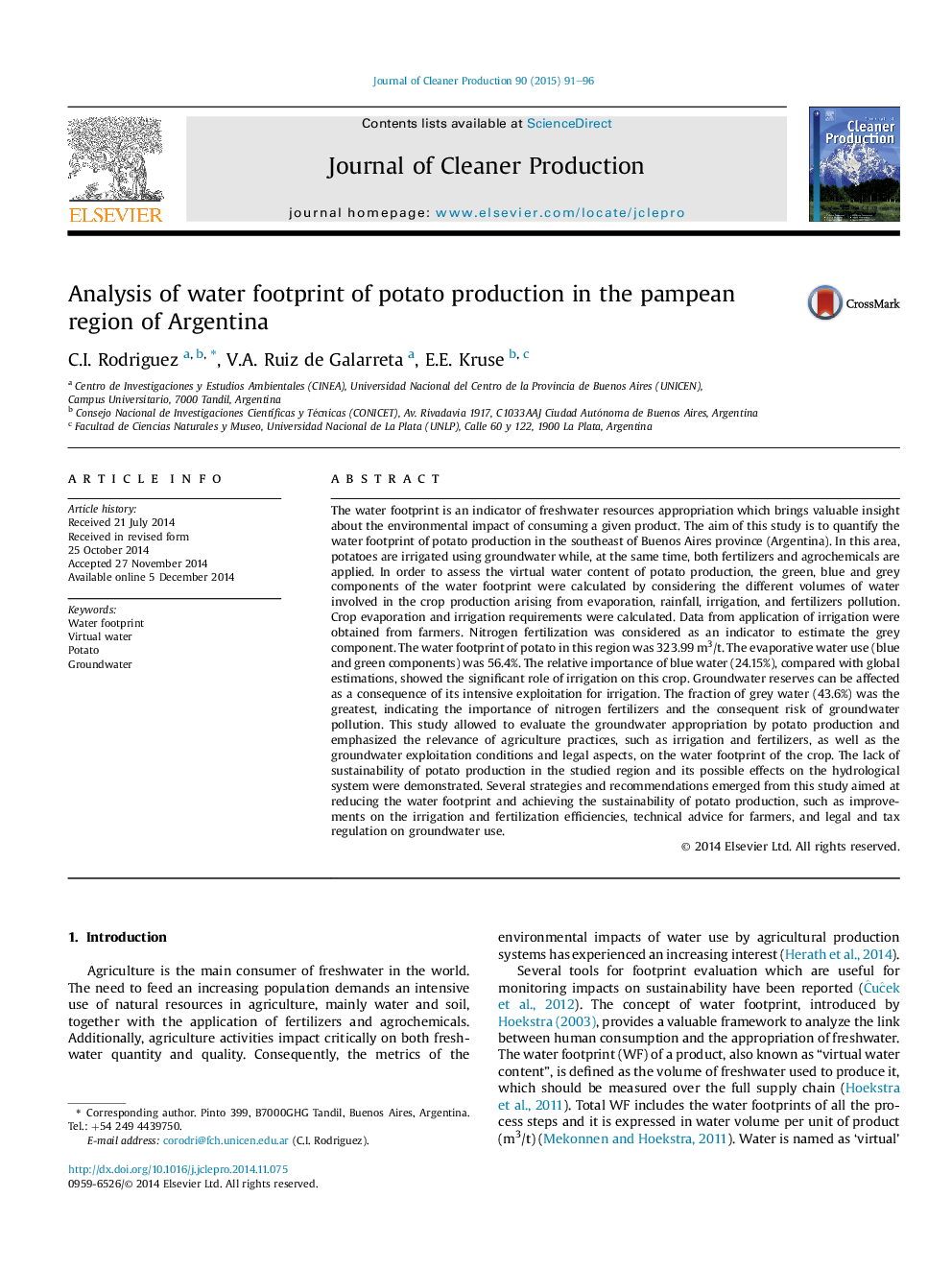| کد مقاله | کد نشریه | سال انتشار | مقاله انگلیسی | نسخه تمام متن |
|---|---|---|---|---|
| 1744665 | 1522156 | 2015 | 6 صفحه PDF | دانلود رایگان |

• The components of potato water footprint were quantified.
• The main component of potato water footprint is grey water use.
• Water use for potato irrigation can affect groundwater reserves.
• Agricultural practices and regulatory issues determined the potato water footprint.
The water footprint is an indicator of freshwater resources appropriation which brings valuable insight about the environmental impact of consuming a given product. The aim of this study is to quantify the water footprint of potato production in the southeast of Buenos Aires province (Argentina). In this area, potatoes are irrigated using groundwater while, at the same time, both fertilizers and agrochemicals are applied. In order to assess the virtual water content of potato production, the green, blue and grey components of the water footprint were calculated by considering the different volumes of water involved in the crop production arising from evaporation, rainfall, irrigation, and fertilizers pollution. Crop evaporation and irrigation requirements were calculated. Data from application of irrigation were obtained from farmers. Nitrogen fertilization was considered as an indicator to estimate the grey component. The water footprint of potato in this region was 323.99 m3/t. The evaporative water use (blue and green components) was 56.4%. The relative importance of blue water (24.15%), compared with global estimations, showed the significant role of irrigation on this crop. Groundwater reserves can be affected as a consequence of its intensive exploitation for irrigation. The fraction of grey water (43.6%) was the greatest, indicating the importance of nitrogen fertilizers and the consequent risk of groundwater pollution. This study allowed to evaluate the groundwater appropriation by potato production and emphasized the relevance of agriculture practices, such as irrigation and fertilizers, as well as the groundwater exploitation conditions and legal aspects, on the water footprint of the crop. The lack of sustainability of potato production in the studied region and its possible effects on the hydrological system were demonstrated. Several strategies and recommendations emerged from this study aimed at reducing the water footprint and achieving the sustainability of potato production, such as improvements on the irrigation and fertilization efficiencies, technical advice for farmers, and legal and tax regulation on groundwater use.
Figure optionsDownload as PowerPoint slide
Journal: Journal of Cleaner Production - Volume 90, 1 March 2015, Pages 91–96